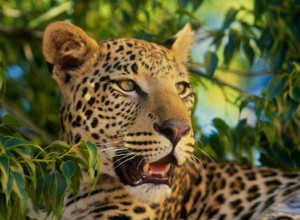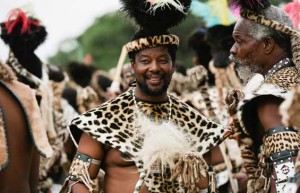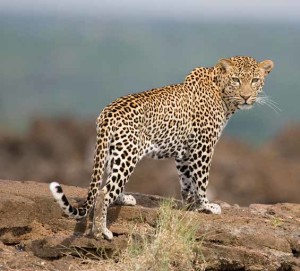Leopard Coats – It’s still a thing…but you can help
by Tim L. Tetzlaff
Naples Zoo Director of Conservation
In the winter of 1962, First Lady Jacqueline Bouvier Kennedy famously slipped on a leopard coat. And while fur coats were nothing new, the photographs sparked a fashion frenzy. By decade’s end, fifty thousand African leopards were being killed each year to meet the demand. But during those same years, conservationists, scientists, and wildlife officials tirelessly worked to build political will on a global scale to insure their grandchildren would inherit a world where leopards still graced the African continent. Fifty years later, the leopards we see on the Zoo’s safaris are living testament to their effort. And like our predecessors, we’re still celebrating successes and rising to new challenges.
Coordinating the international wildlife trade took longer than planning for next season’s fashions. Europe, Japan, the United States, and others already had a high demand for animal parts including ivory, crocodile skins, rhino horn, zebra hides, and spotted furs from numerous cat species. This widespread killing prompted urgent discussions at a conference in Tanzania in 1961 that would eventually grow into an international treaty that came into force in 1975 as the Convention on International Trade in Endangered Species of Wild Fauna and Flora – or CITES (pronounced SIGH-TEES).
Today, 181 Parties work together to regulate the international trade of animal and plant species and ensure that this trade is not detrimental to the survival of wild populations.
In September of 2016, the seventeenth CITES Conference of the Parties will bring representatives from all these countries together in Johannesburg, South Africa. With a grant provided from the Florida Association of Zoos and Aquariums, I will be joining these governmental delegates as well as colleagues from zoos and conservation organizations from around the world for this two-week working meeting. While leopards still stalk the wilds, the global efforts to monitor their trade and that of other rare wildlife are far from over.
SOUTH AFRICAN DEMAND
Although leopard coats are out of fashion in the West, they are growing in popularity among members of South Africa’s Shembe community since they practice the Zulu custom of wearing spotted cat fur during their religious celebrations. Although trade in leopard skins is illegal, Panthera’s Leopard Program Coordinator, Tristan Dickerson, estimates that nearly 1,000 leopard skins are either worn or sold at every major Shembe gathering. This becomes an even more sobering number when put in the context of the Shembe’s five million members.
FAUX FURS FOR LIFE MAKING A DIFFERENCE
To reduce the risk to leopards, Tristan worked with digital designers and clothing companies in China to create affordable, yet high quality fake leopard skin that actually lasts longer than real furs. Through general funding from visitors, members, and donors, the Naples Zoo Conservation Fund is helping to save Africa’s leopards by financially supporting Panthera’s Furs for Life Program.
Respecting the cultural traditions of the Shembe, Tristan developed strong partnerships with leaders of the Shembe Church, who now promote the use of these fake skins, which are made into capes called amambatha. Panthera’s Leopard Program Director, Dr. Guy Balme, now estimates that 30 percent of furs worn at Shembe gatherings are Panthera’s amambatha, compared to just 10 percent of fake furs worn only a year ago.
CARTIER FOR CATS
Earlier this year, Panthera announced a new partnership with Peace Parks Foundation, supported by Cartier. With funding from this iconic jeweler, the Furs for Life Project will create more faux furs to save even more wild leopards. This also proves fashion can also have a positive impact for wildlife.
$30 FOR A LEOPARD’S LIFE
If you’d like to be part of this global effort for leopards, please donate $30 for each faux fur to save a leopard’s life at www.napleszoo.org/give
where 100 percent of your donation will go to this critical effort.
NAPLES ZOO LECTURE SERIES: LEOPARDS
Mark your calendar for the evening of February 18 when Panthera’s Chief Operating Officer Laura Maloney will join us for a special evening presentation on how Naples Zoo and Panthera are partnering for leopards. Space is limited. RSVP today at www.napleszoo.org/speakers. Free for Naples Zoo members. $10 for non-members. Proceeds go toward these efforts for leopards in Africa.
SEE LEOPARDS IN AFRICA
If seeing these majestic cats in the Serengeti is on your bucket list, join me next August in Tanzania. Explore your itinerary at www.napleszoo.org/travel and safari with your Zoo!
Naples Zoo at Caribbean Gardens is a nonprofit charitable organization caring for rare species both in and outside the wild through conservation and education programs that create a better future for both people and wildlife. See more at www.napleszoo.org/conserve






Leave a Reply
Want to join the discussion?Feel free to contribute!